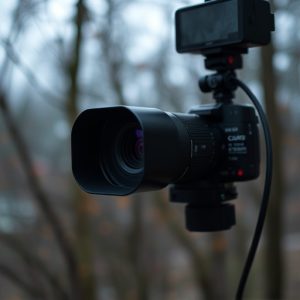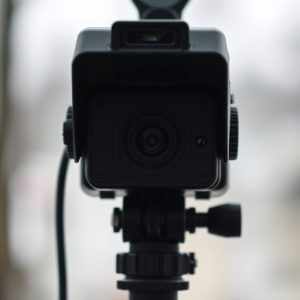Unveiling Hidden Cameras: Everyday Bathroom Objects as Spy Devices
Hidden camera technology has advanced significantly, integrating into everyday objects like smoke de…….
Hidden camera technology has advanced significantly, integrating into everyday objects like smoke detectors and USB sticks for covert surveillance. In bathrooms, these devices often utilize infrared imaging and wireless transmission. This raises significant privacy concerns, necessitating vigilance to identify hidden cameras in strategic spots such as shampoo bottles, toiletry bags, and mirrors. Detecting these cameras requires keen observation, understanding of advanced concealment tactics, and awareness of local laws. Professionals use specialized equipment like thermal imaging and image analysis software. To prevent bathroom surveillance, regularly inspect common hiding spots and invest in security equipment to enhance privacy and security.
Uncover the hidden world of surveillance with our comprehensive guide on finding hidden cameras in bathrooms. In today’s digital age, privacy concerns are paramount, especially in personal spaces like homes and restrooms. This article delves into the intricacies of tiny camera concealment techniques used in everyday objects, providing insights into common bathroom items that could serve as hiding places for these devices. Learn to recognize visual indicators, understand legal implications, and implement security measures to protect your privacy.
- Understanding Hidden Camera Technology
- Common Bathroom Objects as Concealment Devices
- Visual Indicators and Red Flags for Hidden Cameras
- Legal Aspects of Installing and Detecting Hidden Cameras
- Prevention and Security Measures Against Bathroom Surveillance
Understanding Hidden Camera Technology
Hidden camera technology has advanced significantly, with miniaturization allowing for concealed cameras to be integrated into everyday objects. These tiny surveillance devices can be found in various forms, from seemingly innocuous items like smoke detectors and light bulbs to more creative hides like fake rocks or even USB sticks. When it comes to finding hidden cameras in bathrooms, it’s crucial to stay vigilant and understand the latest tactics used for their placement.
Modern hidden cameras often feature infrared capabilities, allowing them to capture images and video in low-light conditions, making them adept at going unnoticed. They can transmit footage wirelessly to a connected device, making real-time monitoring possible. This technology raises important privacy concerns, especially in sensitive areas like bathrooms where personal moments are typically expected to be private. Staying informed about these advancements is key to identifying potential hidden cameras and ensuring your safety and privacy.
Common Bathroom Objects as Concealment Devices
Bathroom objects, seemingly ordinary, can serve as clever concealment spots for hidden cameras. Shampoo bottles, for instance, offer a perfect cover due to their size and common presence in bathrooms. These bottles can be strategically placed on shelves or counters, making it nearly impossible to distinguish them from regular products. Similarly, toiletry bags are versatile hiding places; their soft material allows for easy insertion of small cameras while maintaining an aesthetic appearance.
Toilets and soap dispensers also present unique opportunities. Some models have hollow spaces that can accommodate miniature cameras, providing a discreet way to monitor the room. Even simple bathroom mirrors aren’t immune; hidden compartments or specialized frames with built-in cameras offer creative solutions for those looking to Find Hidden Cameras in Bathrooms.
Visual Indicators and Red Flags for Hidden Cameras
When it comes to finding hidden cameras, especially in sensitive areas like bathrooms, understanding visual indicators and red flags is crucial. Many modern spy cameras have advanced concealment features, making them difficult to detect with the naked eye. However, certain signs can alert you to their presence. For instance, look for any unusual or irregular objects attached to walls or mirrors; these could be hidden camera modules. Small, round or oval shapes that seem out of place might indicate a pinhole camera.
Additionally, keep an eye out for subtle modifications to common bathroom fixtures. A slightly different angle or placement of a mirror, for example, could cover a camera lens. Some cameras are designed to mimic everyday objects like light switches or fire alarms. If you notice any deviations from standard designs or unusual markings on these devices, it might be a red flag worth investigating further using specialized equipment to detect hidden cameras in bathrooms and other spaces.
Legal Aspects of Installing and Detecting Hidden Cameras
In many jurisdictions, the installation and use of hidden cameras are subject to strict regulations aimed at protecting privacy rights. While some countries have no specific laws governing hidden camera usage, others have strict rules prohibiting their placement in certain areas, especially where individuals expect a reasonable expectation of privacy, such as bathrooms. The legal landscape around these devices can be complex, with varying interpretations across regions.
When it comes to detecting hidden cameras, technologies like thermal imaging, specialized detectors, and advanced image analysis software play a crucial role. In the context of finding hidden cameras in bathrooms, professionals employ discreet methods to uncover covert surveillance equipment. This includes meticulously searching for unusual wiring, magnetic anomalies, or any signs of tampering that might indicate the presence of hidden camera components. Staying within legal boundaries is paramount, ensuring that any detection efforts respect privacy laws and rights.
Prevention and Security Measures Against Bathroom Surveillance
To prevent and secure against bathroom surveillance, it’s crucial to stay vigilant and employ a variety of measures. Regularly inspect common hiding spots such as soap dispensers, mirror frames, and wall outlets for any signs of hidden cameras or recording devices. Advanced technology now allows for tiny, undetectable cameras that can be concealed within everyday objects, making it essential to be proactive in spotting these clandestine devices.
In addition to manual inspections, consider investing in security equipment designed to detect hidden cameras. These include infrared sensors, UV light detectors, and specialized camera markers that can reveal the presence of hidden recording mechanisms. By combining these preventive steps, you can significantly reduce the risk of being surveilled in your bathroom and enjoy a sense of privacy and security.
In today’s digital age, understanding how to find hidden cameras in bathrooms is an essential aspect of privacy protection. By familiarizing yourself with advanced camera concealment techniques and everyday objects that can serve as hiding places, you can better navigate this modern challenge. The article has explored various strategies, from recognizing visual indicators to discussing legal considerations and prevention measures. Equipped with this knowledge, individuals can take proactive steps to safeguard their personal spaces and maintain a sense of privacy in seemingly innocuous settings like bathrooms.


